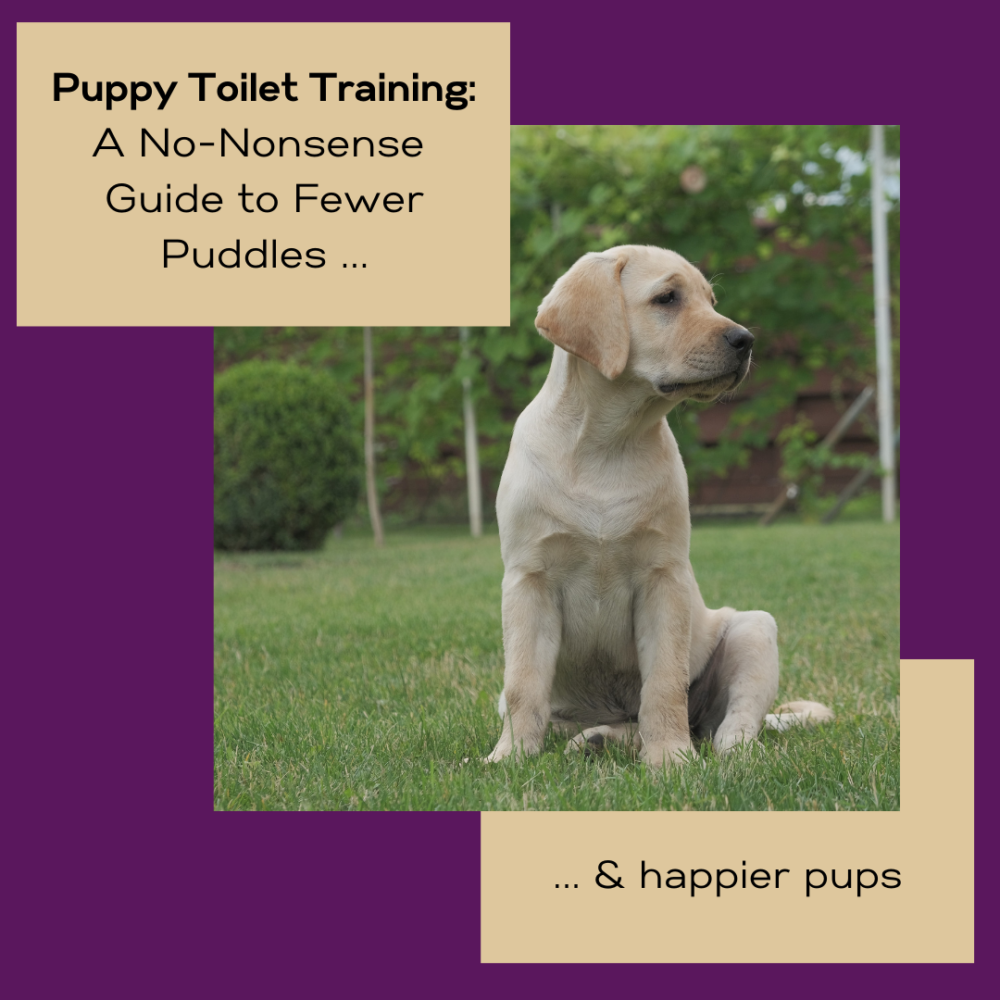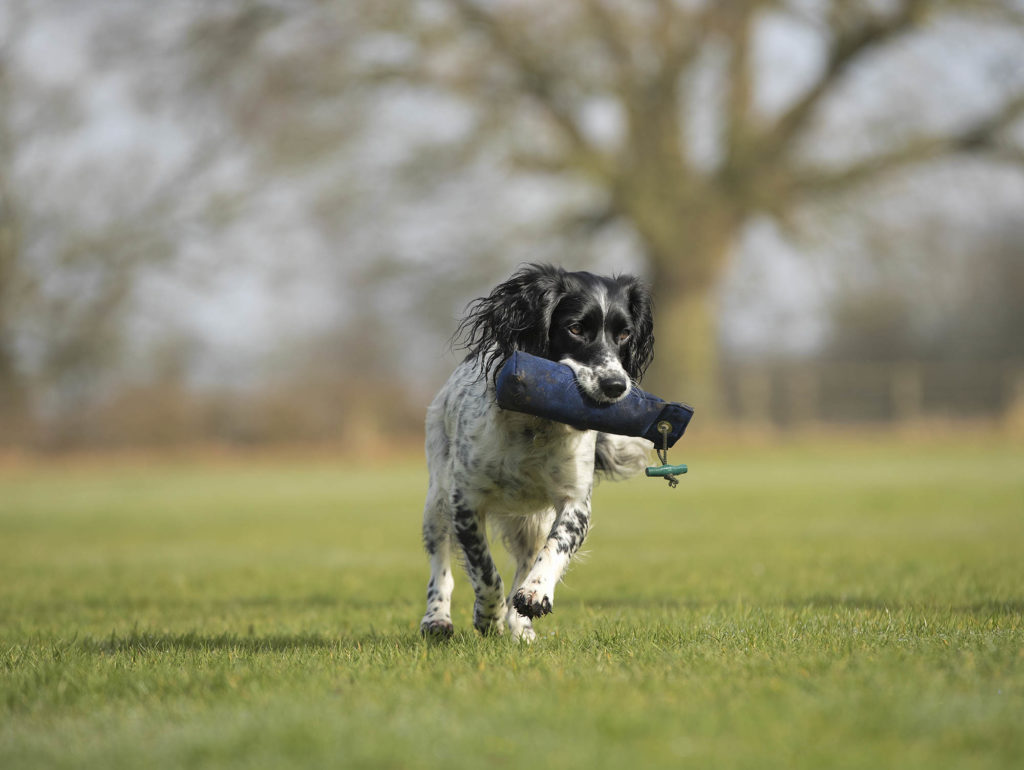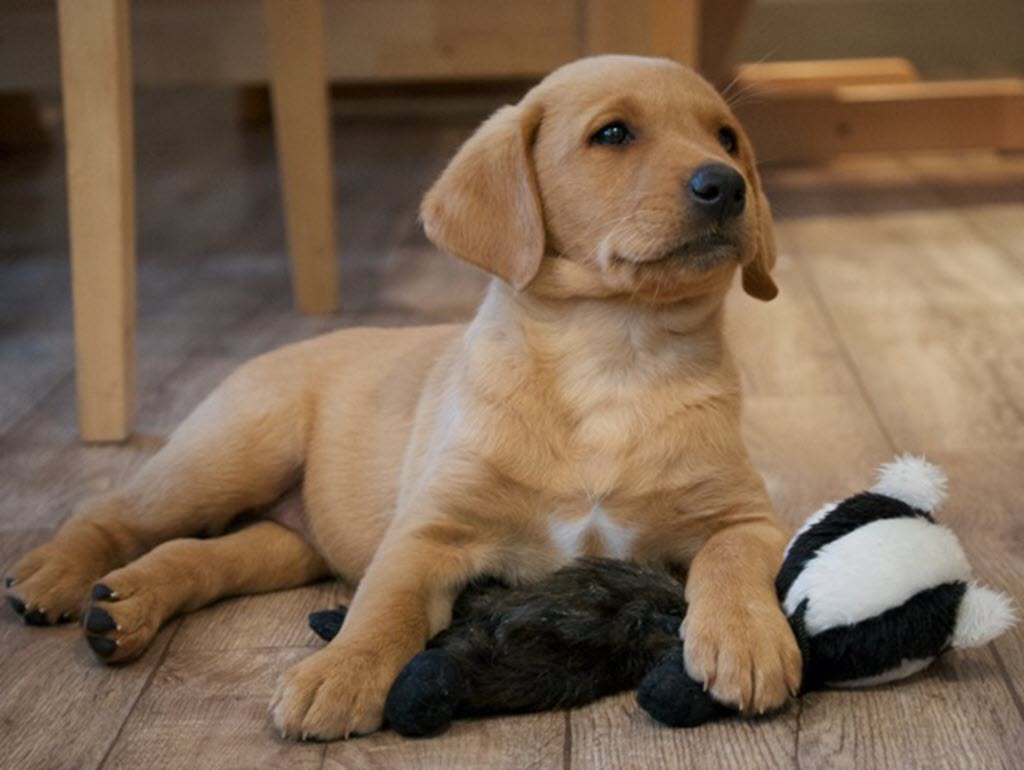Welcoming a new puppy into your home is full of joy, snuggles, and… the occasional puddle. Puppy toilet training can feel like a full-time job in those early weeks, but with a bit of structure (and a lot of vigilance), it doesn’t have to be stressful.
As a positive gundog trainer, I’ve had plenty of experience helping families get off to the right start with their pups. And while there’s no magic wand, there is a solid, practical method that works. So whether you’re reading this with a mop in one hand and a puppy in the other, or just preparing ahead, here’s my free guide to successful puppy toilet training.
1. Timing is Everything
Puppies need to go to the toilet a lot. And they don’t come with an internal clock that tells them to wait until you’ve finished your cup of tea. As a rule of thumb, take your puppy outside:
-
Every 30–40 minutes while they’re awake
-
After eating
-
After playing
-
After waking from a nap
You’re not just hoping they’ll go – you’re giving them lots of chances to rehearse the right behaviour: toileting outside where you want it.
2. Make the Garden Easy to Reach
Think of the garden like your pup’s en suite. The quicker and easier it is to access, the better. Keep the route clear and use the same door each time so your puppy begins to learn where to head when nature calls. Eventually, they’ll learn to ask.
3. Use a Cue Word
Just as we teach cues for recall or heelwork, you can teach your pup a toilet cue. I like something simple like “busy busy” or “hurry up”. Say it softly as your puppy starts to go – not before, and definitely not after. Over time, they’ll associate the cue with the action, which is brilliant for when you’re caught short in the rain or on a road trip.
4. Don’t Leave the Back Door Open
It’s tempting to let them wander in and out during nice weather, but it’s a toilet training trap. If you don’t see them go, you can’t start learning their routine. Plus, puppies can be sneaky – they might go out to sniff the roses and then pop back in to pee on the rug. So keep that door shut and supervise.
5. Track Toileting Times
One of the most useful tools? A toilet log. Whether it’s a notebook, a phone app, or a chalkboard by the back door – keep a record of when your puppy pees or poos. If multiple people are helping with puppy care, it keeps everyone in the loop and helps spot patterns.
6. Avoid Puppy Pads (and Treats)
Puppy pads might seem helpful, but they’re often a step you don’t need. Why teach your puppy to go on a pad only to retrain them to go outside later? Cut out the middleman. Straight to grass (or your chosen toilet spot) from day one.
And treats? Be careful. I don’t use them for toilet training because I’ve seen dogs learn to do half a wee and hold the rest in anticipation of a biscuit. If you do choose to reward, wait until they’ve fully finished – and make sure your timing is spot-on.
Need a Bit More Help? I Offer One-to-One Puppy Home Visits
If you’re feeling overwhelmed or want a bit of expert guidance to get things off to a flying start, I offer personalised puppy home visits in Andover, Hampshire and surrounding areas. It’s a great way to get tailored advice and hands-on support in your own environment.
You can get in touch by phone or email, and we’ll get your puppy’s routine running like clockwork – with fewer accidents and a lot more confidence.
Gundog Training Courses
Have you got a gundog breed at home? Would you like to train him/her for the shooting field, or would you just like to train your dog to a high level? I can help with these scenarios.
Puppy Training Courses
When you first bring a puppy home it can be very exciting but daunting all at the same time, so I am on hand to come and guide you through those key canine development stages to ensure that your puppy grows up to be well-mannered.



